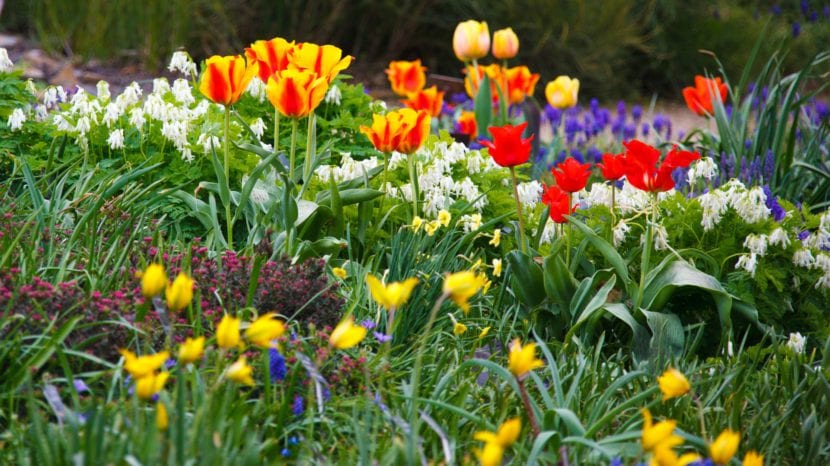
La spring it is the season of color par excellence. It is the maximum expression of life and growth; when the plants, after having spent a few cold and even very cold months, it is as if they welcome a new season in which, once again, they will have to "fight" to get the attention of the pollinating animals so that the species can move on.
The fight can be brutal, as there can be many specimens of plants, many flowers, and very few animals that dedicate themselves to pollinate the flowers. Perhaps this is why there are so many truly spectacular spring flowers. We show you some of them here, in Jardinería On.
Poppy
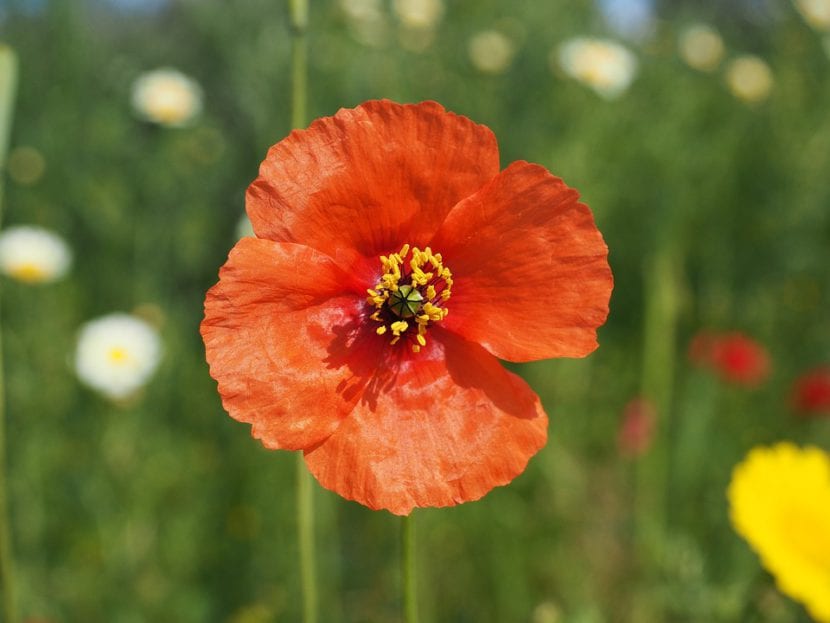
The poppy is one of the annual wildflowers that we can find in Europe, Asia and North Africa. Its scientific name is Papaver rhoeas, and belongs to the Papaveraceae family. It is about 50cm tall, and the flowers have 4 red petals, and they are very delicate; so much so that they easily fall off.
Begonia
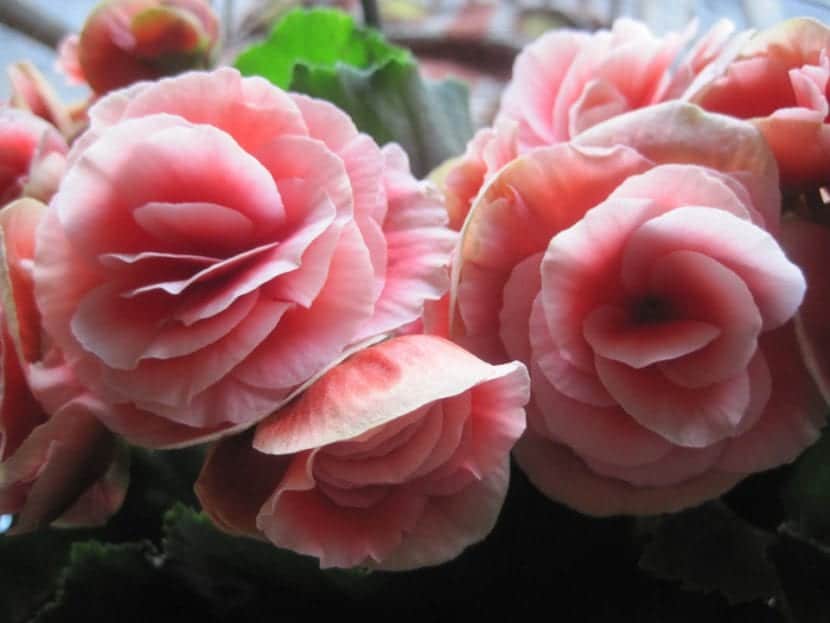
The botanical genus Begonia comprises more than a thousand species, in addition to its almost 10.000 varieties and hybrids. It belongs to the Begoniaceae family, whose origin is found in America, Africa and Asia. In its natural state it grows in tropical and subtropical forests, in the shade of large trees, although it can also grow inside your home for several years .
Bromeliad
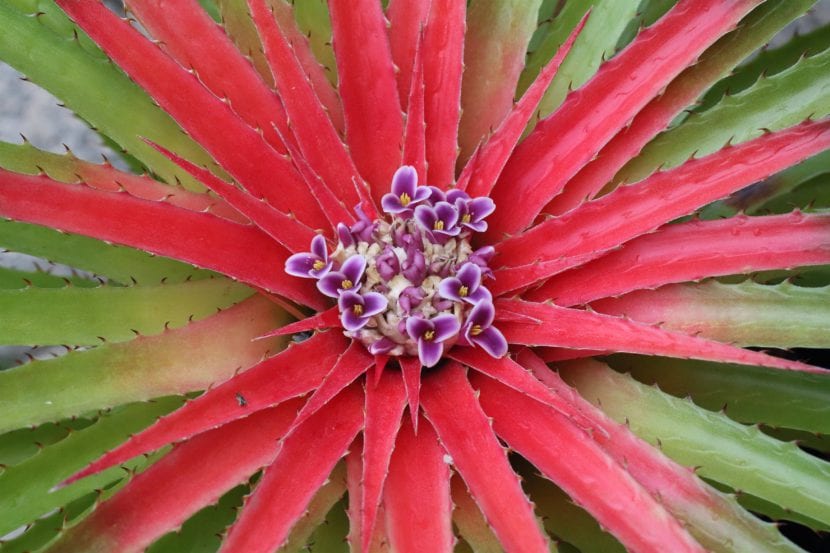
Bromeliad is a genus of tropical plants native to America that belongs to the Bromeliaceae family. It is herbaceous, and depending on the species it can be lithophyte (which grows on stones) or epiphyte (which grows on trees or other plants). The leaves grow in a rosette, usually stemless, thick. Depending on the species, it can measure about 30cm in height by another 30cm in diameter. As a curiosity, say that after blooming it dies, leaving the seeds and suckers.
Due to its low resistance to cold, It is grown as a houseplant.
Bulbous
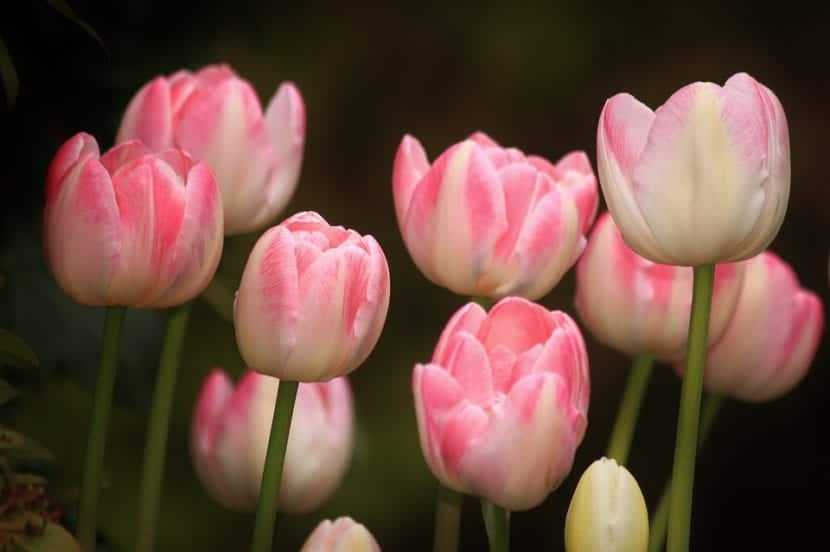
During the spring there are many bulbous flowers that bloom, among them we highlight the tulips, hyacinths (Hyacinthus sp.), The bays (Cala sp), the saffron (Crocus sativus) waves snowdrops (galanthus nivalis). Plant them in pots or in the garden during the fall, and you will enjoy a spring season full of beautiful colors.
Campanula
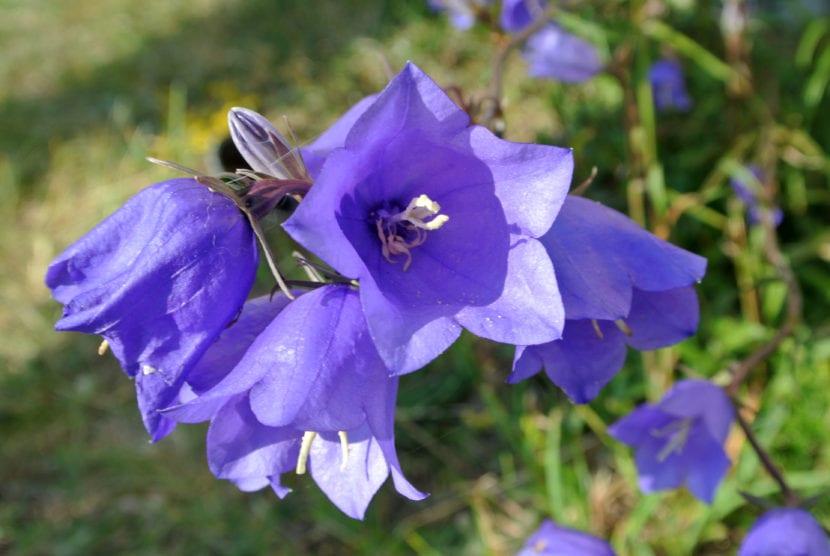
Campanula is a genus of herbaceous plants that can be annual, biennial or perennial depending on the species. It belongs to the Campanulaceae family, and is native to the Northern Hemisphere, found mainly in the east of the Mediterranean region. It can grow up to 2m tall, and its small flowers measure up to a maximum of 5cm in diameter, colored blue, purple or white.
digitalis
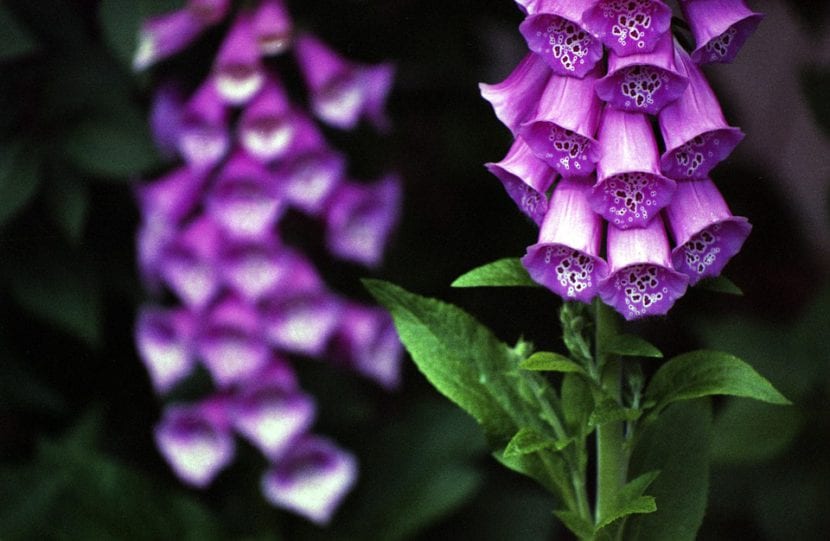
The Digitalis, or foxgloves as they are also called, they are biennial herbs and shrubs that belong to the Plantaginaceae family. They are native to Europe, Asia Minor and North Africa. They can grow up to 1m tall, with flowers grouped in lilac or white inflorescences. They like mild climates, so growing them in warm areas can be tricky.
Impatiens
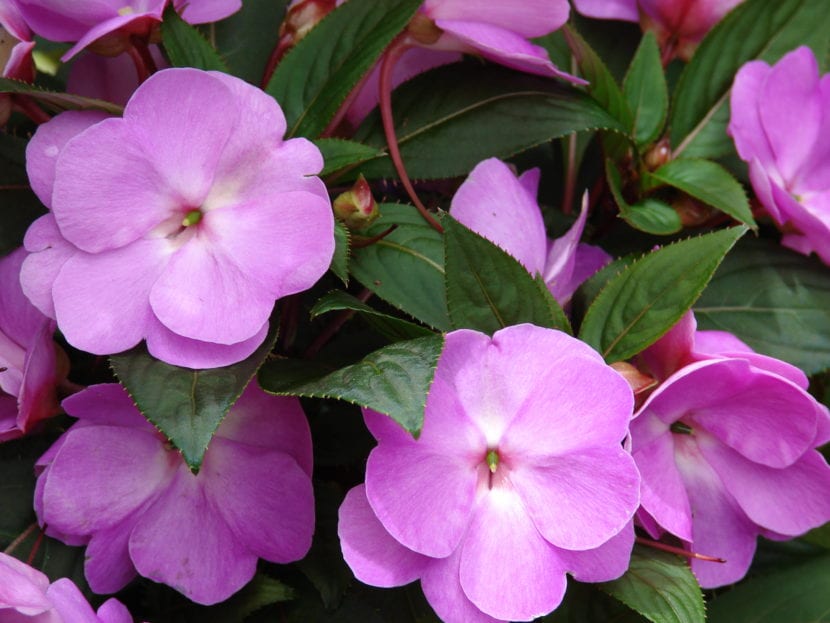
Impatiens is a genus of perennial herbaceous plants comprising about a thousand species belonging to the Balsaminaceae family. It is native to the tropics. It is a plant that, depending on the species, can grow up to 50cm in height, with red, pink, purple, or orange flowers. In Spain it is grown as a seasonal plant, as it is very sensitive to cold.
Matthiola
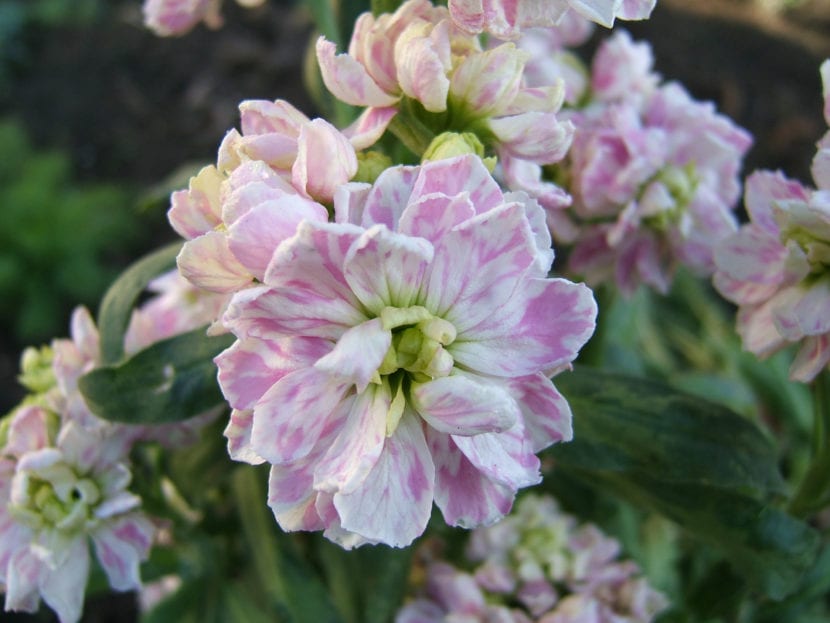
The Matthiola, much better known by the name of wallflowerIt is a herbaceous plant that can be annual or biannual depending on the species. It belongs to the Brassicaceae family, and is native to Europe. It reaches a height of 50cm, and produces flowers of very varied colors, such as white, pink or bicolor, of which it must be said that they smell very very good.
Mimulus
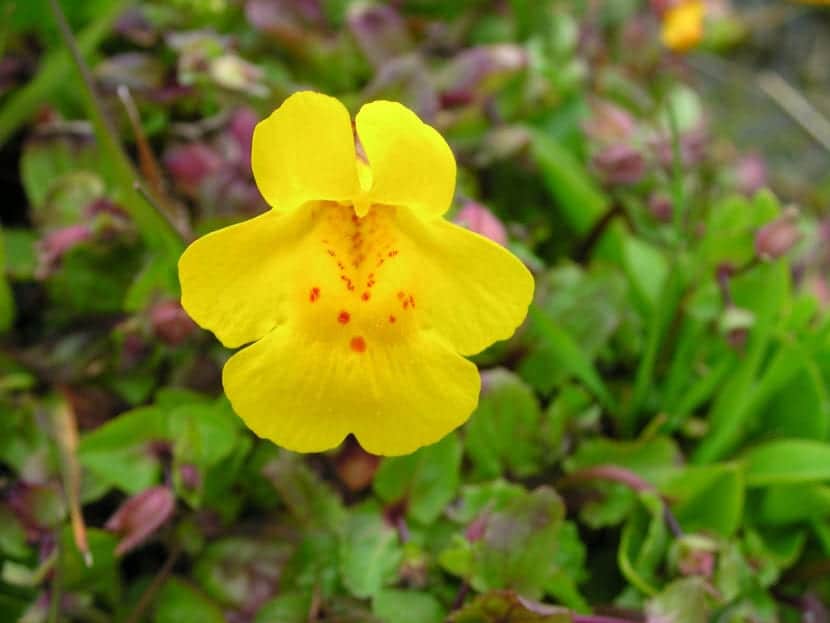
The Mimulus, known as flower-monkey, is a genus of annual or perennial herbaceous plants native to America that comprises about 150 species. It belongs to the Phyrmaceae family, and is characterized by growing to a height of 30-50cm, with trumpet shaped flowers yellow, lilac or red.
As a curiosity, you should know that the species mimulus lewisii has flytraps, thus being considered a protocarnivorous plant; that is, it is capable of trapping insects but not directly digesting them.
Phlox
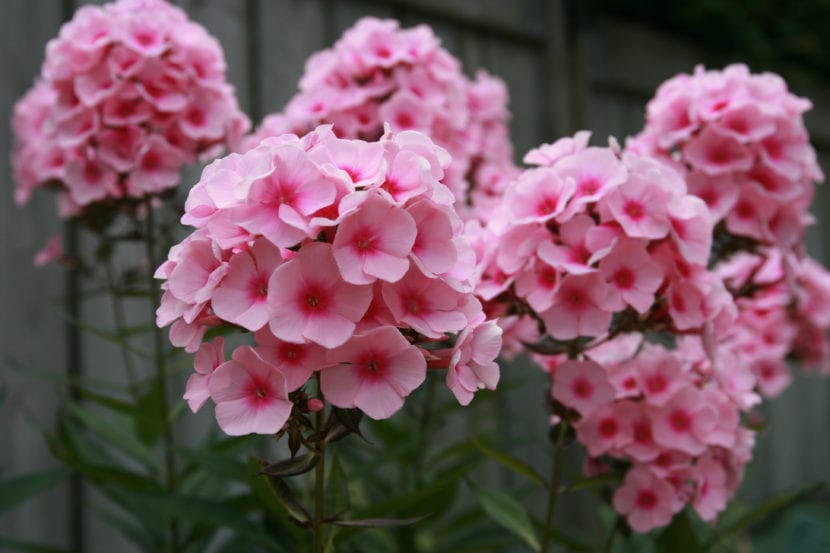
The botanical genus Phlox comprises about 120 species belonging to the Polemoniaceae family. Most are native to North America, although they are also found in Asia. They are annual or perennial herbaceous plants, very popular for their showy inflorescences whose flowers are pink, red or white. There are some that grow to a maximum height of 1,5m, but most do not exceed 50cm. Very interesting to create fantastic flower beds.
tagetes
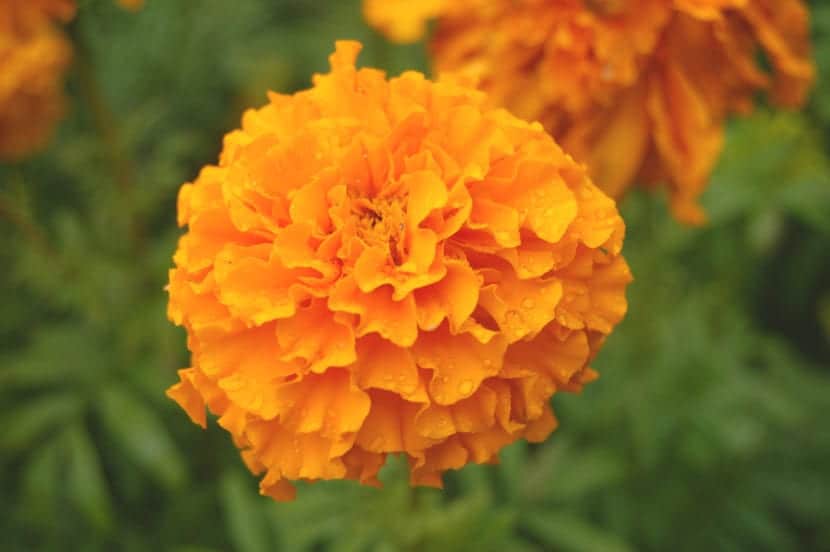
Los Tagetes, much better known by the names of Indian carnation, indian rose, chinese carnation, damascene o turkish carnation, is a genus of annual or perennial herbaceous plants that belongs to the Asteraceae family and comprises 47 species. It is native to Mexico, and they are characterized by having flowers of 2-3cm in diameter, of very bright orange or red colors. In temperate climates it is used as a seasonal plant, since it is sensitive to cold.
How do spring flowers reproduce?
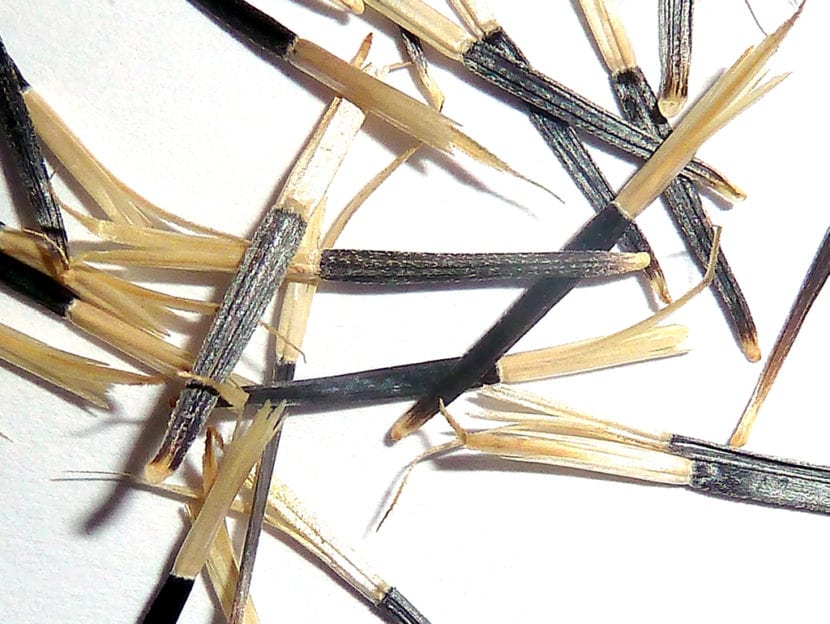
Tagetes seeds
Since we are in spring, the season of life, it is time to prepare the seedlings. Now is the best time to sow and thus obtain a greater number of plants at very low cost. Of course, it is important that you know that most of the plants that I have shown you are very cheap, and can cost between 1 and 2 euros for an adult specimen, but for that price you can have an envelope full of seeds that will become plants.
So how are they sown? Of course, the first thing to do is acquire the seeds. To do this you can go to a nursery, garden center and even a farm store to choose the plant you want to have in your garden or in a pot decorating your patio. Once you have them, I recommend putting them in a glass of water for 24 hoursAlthough this is optional, since they are plants whose germination rate is already high, but this way you make sure that all, or 99% of them will germinate.
Once this is done, the next day you have to prepare the seedbed. As such you can use from traditional pots, to seedling trays, through milk containers, glasses of yogurt, ... whatever you prefer. Of course, whatever you use, must have holes for drainageAs a permanently flooded land can prove fatal to your spring flowers.
Now for the best part: fill the seedbed with substrate and sow the seeds. As they are very resistant flowers, we can use any substrate, but if we can, it is advisable to mix it with 20% perlite or any other similar material so that the water drains quickly and completely. Fill the seedbed completely, and put a maximum of two seeds in each one, separated from each other. You got it? Now cover them with a little substrate, enough so that they cannot be seen or the wind can carry them away, and give them a good watering.
Finally, you will only have to place the seedbed in a place where the sun shines directly, keep the substrate moist ... and wait about 2-3 weeks, which will be when they will begin to germinate. When they do, let the seedlings grow for a month in those pots, and then transfer them to a larger pot or the garden.
And ready. What do you think of these spring flowers? Do you know others?